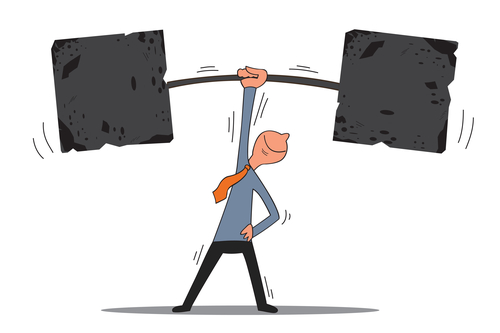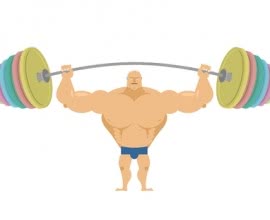Old School Body Composition, part 1
Adherence to a course of regular physical exercise is critical to function and health, and, thus, quality of life. This applies to all human beings—not only those who struggle with excessive weight. Yet it is, perhaps, this latter group who stand to benefit from exercise the most.
Even the individual who has undergone an obesity treatment procedure (e.g., gastric band, plication, balloon, or sleeve) will do well to devote himself to consistent daily exercise, for this will contribute to the maintenance and improvement of the results derived from such a procedure. Indeed, medical intervention should be seen as one piece of a larger puzzle, of which regular exercise and sound diet are also part.
Although obesity is, certainly, mentioned in the historical record, it would seem it has now reached unprecedented proportions. But in the millennia preceding the Industrial Revolution, and even some time thereafter, when manual labour was common and, truly, manual, obesity was less common, especially amongst the working class, and was a condition, largely, associated with the opulence of the upper classes.

For a great portion of human history, we were hunter-gatherers, which meant our daily lives were spent in the pursuit of physical security—procuring shelter, water, food, and fire, and defending, and then resting when we could. In other words, we performed work, regularly and frequently, and then recovered, before performing work again. Moreover, since food was, during certain periods, only available, at intervals, eating was, often, intermittent, which had the effect of creating a calorie deficit—sometimes, even a detrimental one.
Nor was prehistoric man a specialist; he did not focus on one sport or one body part. To the contrary he was a generalist, by necessity, and his “work” included walking, sprinting, jumping, climbing, crawling, throwing, lifting and carrying weight, striking, and wrestling.
With the exception of play, these activities were engaged in, as a consequence of answering the basics needs of survival, for himself and the tribal unit. There was, for our ancestors, no specialized programme of exercise to be followed; there were no personal trainers, and, perhaps, most notably, no fads. Life was eat, sleep, and work, just as it is for animals, in the wild.
With the dawn of the agricultural age, roughly between 10,000 and 8,000 B.C., the daily activities of man were modified, somewhat, to suit the unique requirements of working the land. Markedly reduced was the need to jump, sprint, crawl, and climb. Still, farming demanded work, aplenty, and the opportunity to lift, carry, and drag weight remained, as did the use of simple tools such as hammers, picks, axes, and the like. And so, the farmer expended the energy stores of his body, regularly, taxing muscle, bone, sinew, heart, and lungs, and burning calories in the process.
It merits mentioning, as well, that men of war, often, underwent modes of training that echoed the primal movements engaged in by prehistoric man. In preparation, for combat, they would walk, run or sprint, jump, crawl, climb, and, of course, fight. From the ancient Greeks and Romans, to the knights of the Middle Ages, to certain sectors of today’s militaries, such exercises have figured, prominently, in the training of warriors.
But, alas, notwithstanding the vestiges of fitness within the military, the fact remains that the average person lives in a poor physical state, in spite of his honourable hunter-gatherer pedigree. His life is a sedentary one, spent sitting down, driving a car, and taking the lift. If he does work a manual labour job, he uses heavy machinery to ease that work, at every opportunity; still, such a one is better off than those who do nothing.

Physically fit people are in the minority. Although we live in an age in which we are bombarded with fitness programmes and diets, it is one in which we are fatter and weaker than ever, as a people. And so it is that our bodies, now, require intentional exercise to fulfil a basic need, once satisfied by the very act of living, but now neglected, in the shadow of technological advance and convenience.
In part II of this article, we shall examine some of the principles that underlay the activities of pre-industrial man and that can, today, guide us in laying the foundation of a sensible and effective exercise regime.
References:
http://emedicine.medscape.com/article/123702-treatment
https://www.movnat.com/the-history-of-physical-fitness/
http://jasonferruggia.com/what-i-learned-about-training-at-my-summer-job/
https://www.t-nation.com/workouts/russian-strength-skill-the-workouts
https://www.movnat.com/the-roots-of-methode-naturelle/
http://www.primitivemovement.com/about/philosophy/
Guts Muths, Johann Christoph Friedrich (1803) Gymnastics for Youth. Philadelphia: Printed for P. Byrne.
Justa, Steve (1998) Rock, Iron, Steel. Salt Lake City: Iron Mind Enterprises, Inc.: Nevada City, CA.
Fleischer, Nat (1937) Training for Boxers. 9th ed., New York: “The Ring” Athletic Library.














